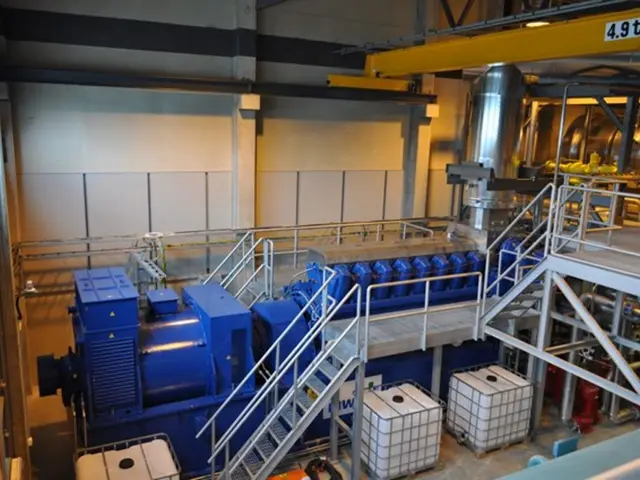Exploring the Creative Frontier: Mastering Modular Synthesis in Audio Production
In the realm of electronic music, modular synthesis stands out as a unique and creative approach to sound design. This article will guide you through the essentials of modular synthesis, from understanding basic components to advanced techniques that will help you expand your sonic palette.
The Building Blocks of Modular Synthesis
At the heart of modular synthesis lie components like Voltage Controlled Oscillators (VCOs), filters, and envelope generators. Understanding these basic elements is crucial for beginners. VCOs generate the fundamental sound waves, while filters shape the timbre and resonance of these waves. Envelope generators, on the other hand, control the dynamics of the sound.
Essential Equipment for Beginners
Starter kits from reputable manufacturers like Moog and Doepfer are a great place to start. These kits include essential modules like VCOs, filters, and sequencers, providing a solid foundation for your modular journey.
Setting Up Your Modular Synth
Before powering up your new synth, ensure that your power supply is compatible with all modules. Follow the guidelines closely when installing new software or firmware updates.
Signal Flow: The Roadmap for Your Sounds
Signal flow becomes the roadmap for these sounds, guiding them from oscillators through effects and out to the speakers. A basic patch might start with connecting an oscillator to a filter, then routing the output through an amplifier, and using an envelope generator to control dynamics.
Voltage Controlled Amplifiers (VCAs): The Key to Dynamic Control
VCAs are essential in modular synthesis, adjusting the amplitude of a signal using another control voltage. They allow dynamic control over sound levels, useful for creating pulse-width modulation effects or fade-ins and fade-outs within sequences.
Cable Management: Preventing Mid-Performance Confusion
Labeling cables and modules can prevent mid-performance confusion, and troubleshooting common issues like audio signal loss or unstable connections can minimize unexpected pitfalls.
Exploring Resonance and Harmonics
Exploring resonance in modular synthesis can enrich sound design by amplifying specific frequencies and creating vibrant textures. Working with harmonics allows shaping these resonances, combining them in ways that add depth and richness to sounds.
Advanced Techniques for Mastering Modular Synthesizers
- Experimenting with advanced patching workflows that mimic hardware modular synths, allowing you to interconnect modules creatively and develop complex sound designs.
- Using performance-driven controls such as isomorphic keyboards for intuitive harmonic play, CV sequencers to keep modulations evolving dynamically, and multi-axis (X-Y) pads to manipulate several parameters simultaneously for expressive sound shaping.
- Integrating envelopes, multiple LFOs, and random modulation sources to create nuanced, evolving textures. Drawing custom LFO curves and using grids to fine-tune modulation shapes can add intricate rhythmic and dynamic variation to your patches.
- Exploring granular synthesis techniques within your modular setup. Adjusting parameters like grain size, number of grains, sample boundaries, and playback direction allows for creating rich textures and experimental sounds that push beyond typical subtractive synthesis.
- Adopting a mindset of experimentation over perfection, as mastering modular synths involves discovery through trial, error, and exploring unconventional patch ideas rather than perfecting a single technique.
- Studying genre-specific production techniques and templates to understand how to craft sounds relevant to your style, leveraging expert tutorials or courses to deepen your sound design knowledge and workflow efficiency.
Mixing in Modular Synthesis
Mixing in modular synthesis involves managing various sound sources and directing them through a series of processes. Access to online courses is a convenient way to deepen your understanding of modular synthesis, with platforms like Learning Modular Courses providing comprehensive lessons.
By following these tips and techniques, you'll be well on your way to mastering the art of modular synthesis and expanding your sonic palette. Happy exploring!
- In modular synthesis, Voltage Controlled Amplifiers (VCAs) are essential for dynamic control over sound levels, enabling the creation of pulse-width modulation effects and fade-ins/fade-outs within sequences.
- Understanding the basic components like Voltage Controlled Oscillators (VCOs), filters, and envelope generators is crucial for beginners in the realm of modular synthesis.
- To prevent mid-performance confusion and troubleshoot common issues in modular synthesis, cable management and labeling modules are vital practices.
- To enrich sound design in modular synthesis, exploring resonance and harmonics can amplify specific frequencies and create vibrant textures.
- Advanced techniques for mastering modular synthesizers include experimenting with various patching workflows, using performance-driven controls, integrating envelopes, multiple LFOs, and random modulation sources, and studying genre-specific production techniques.
- Integrating audio from external sound sources, like audio files or hardware devices, into a modular setup opens up endless possibilities for experimentation and expanding one's sonic palette.
- Delving into modular technology as a lifestyle and hobby can lead to personal fulfillment, engaging in education and self-development, and participating in electronic music, entertainment, and the global modular community.




